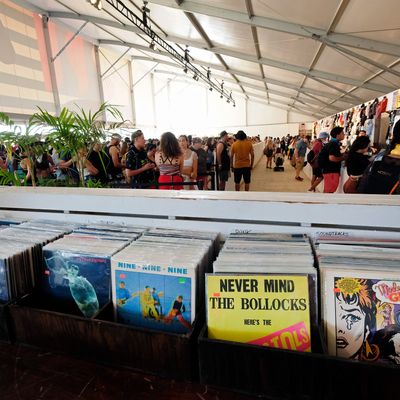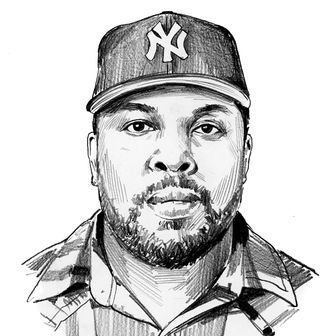
SXSW is canceled. Coachella is delayed. Live Nation and AEG tours are suspended. Broadway is going dark. Some TV talk shows continue, eerily absent their lively studio audiences. Major sporting events are off until further notice. The brisk pace of the coronavirus outbreak is causing chaos in every sector of the entertainment industry. Curbing infections means breaking up crowds, and this is a bitter pill for musicians in particular, many of whom have come to count on touring for income and exposure since the record industry bubble burst in the early 2000s amid the rise of digital piracy. If you can’t make much money selling music, and streaming service royalties offer a fraction of a cent every time someone plays your album, and you can’t tour clubs, stadiums, festivals, or arenas, what do you do? (This conundrum extends to event staff, who can’t feasibly make much of a living while the public is being discouraged from gathering in groups of more than 500 people. In a perfect world, this would be offset by legislation allowing for paid leave. In this broken one, ensuring people’s ability to abide unavoidable work stoppage is regrettably a partisan issue.)
The impending live music freezeout drives home the extent to which the current music industry model is, itself, a kind of disaster relief strategy built to counteract a precipitous drop in the public concept of how much a song or album is worth. It has succeeded thus far at returning a measure of the rule of law to the machine by offering access to digital streaming platforms at unbeatable Columbia House subscription prices all year round. The upshot of incorporating streams into the modern chart rules is not just that it nailed down the audience’s listening habits beyond physical media. It incentivized repeat playback as a method of boosting an artist’s standing, mirroring the rush in the 20th century to buy an album in its first week to inch it closer to No. 1. The issue is that as much as it mirrors the old model, it doesn’t pay as much. In his 1993 article “The Problem with Music,” legendary rock producer Steve Albini outlined the brutal math that made it possible for a band to sell a quarter-million albums and still be living at the poverty line, in spite of having earned millions for the biz. That was the model in a boom time. On the other side of the late ‘90s peak of the record sales bell curve, there’s less coins in the pot but many more hands grabbing.
In the streaming age, we’ve learned that many listeners who won’t necessarily pay very much for music will often spring for access and memorabilia. The enterprising artist is out on the road on both sides of the Atlantic hawking merch and doing meet-and-greets as often as their bodies and minds allow, the idea being that fans who have the means can subsidize what the casual listener no longer will. VIP ticket sales and nightclub appearances offer perks and access not everyone can get their hands on. It’s extra cash for the artist and a measure of clout and connectivity for fans. Memories are big business. The coolest place you can be in an era where everyone can stream all the same music and movies for the same price is in the room up close with someone you look up to.
Coronavirus is the nightmare scenario that calls the viability of this business structure into question. It’s the bottom falling out of the idea that everyone will always want to be in the room. A major tributary for touring artists is drying up quick with no end in sight. With it goes work for sound and lighting teams, people working merch tables, bartenders, and so on. There is real danger for the spring and summer festival circuit right now, which is already spread thin in terms of the amount of bookable talent and the increase in weekend festivals looking for them to play. Record Store Day has been pushed back to June, meaning resolute retail outlets counting on the annual bump in income in April have to soldier on even further into the year without the cache of rarities and exclusives that draws superfans out in numbers in the spring. The promising uptick in overall music industry revenue we’ve seen over the last few of years could easily fizzle out in an extended period of loss like the one on the horizon right now. This isn’t just a problem for artists and labels and the people who work around them. If they can’t make money, we can’t have music.
What can we do? Support, support, support. If it’s in your budget, show love to an artist you like. Buy an album. Hit up a merch store. Keep running up streams and helping boost artists’ signals on social media. In the long term, let’s start thinking about better ways to navigate the relationship between artist and audience. Fan-funded album projects cut overhead way down. Bandcamp gives attention to independent artists without charging them to upload music or taking an absurd cut of the revenue. (Their rates run 10-15 percent on music and merch.) Artists like Newark rapper Mach-Hommy and Long Island’s Roc Marciano have been setting higher price points on their work that more deeply take into account the costs of working and living for talent instead of just the average price the public is willing to pay, following in the footsteps of Nipsey Hussle, who bet that his following would run him $100-1000 for a mixtape and succeeded. Shell out for early access instead of waiting for the music to eventually hit streaming services, and you get to feel like a part of the process. Of course it’s not just the entertainment industry feeling the pinch from the current climate of social distancing. But those who can should do what they can, whatever way they can.
We’re committed to keeping our readers informed.
We’ve removed our paywall from essential coronavirus news stories. Become a subscriber to support our journalists. Subscribe now.


